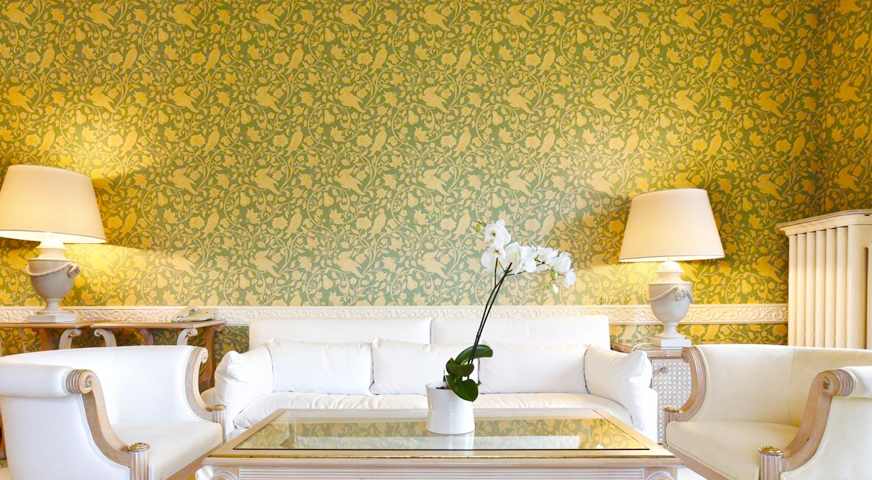Things to consider for wall paper fixing work

When planning for wallpaper fixing work, there are several important factors to consider to ensure the installation is smooth, durable, and visually appealing. Here’s a detailed list of things to consider before proceeding with wallpaper installation:
1. Surface Preparation:
- Wall Condition: Ensure the wall is clean, smooth, and free of any imperfections. Cracks, holes, or uneven surfaces should be patched up with filler or plaster. Wallpaper adheres best to a clean and smooth surface.
- Cleaning: Walls should be free of dust, grease, or any stains. Use a damp cloth to wipe the walls before installation. If the walls are particularly dirty, a mild detergent solution can be used.
- Priming: In some cases, priming the walls is essential. A primer helps the wallpaper stick better and can prevent moisture from seeping into the wallpaper. A good quality primer will also enhance the wallpaper’s longevity.
2. Wallpaper Selection:
- Material Type: There are different types of wallpaper materials to choose from, including vinyl, paper, fabric, and non-woven. Choose the material that suits your space and intended use. For example:
- Vinyl Wallpaper is durable, washable, and suitable for high-traffic areas like kitchens and bathrooms.
- Paper Wallpaper is more traditional, often used for living rooms and bedrooms, but may require more care and maintenance.
- Pattern Matching: If you’re using patterned wallpaper, ensure that the wallpaper rolls are correctly aligned to match the pattern across seams.
- Color & Design: Choose a design and color that complements the existing decor. Lighter colors can make a room feel more spacious, while dark tones add a cozy feel. Consider the room’s size, lighting, and purpose when selecting the pattern.
3. Wallpaper Adhesive:
- Choosing the Right Adhesive: The type of adhesive you use depends on the wallpaper material. Most wallpapers come with pre-applied adhesive (peel-and-stick), but if you’re using traditional wallpaper, you’ll need to apply adhesive separately.
- Pre-pasted Wallpaper: This type has adhesive applied already; you just need to dampen it.
- Unpasted Wallpaper: Requires separate paste that must be applied before hanging.
- Type of Paste: Choose a paste that is suitable for the wallpaper type and the surface you’re working with. Some pastes are more suitable for heavy-duty wallpapers, while others work best on lighter paper-based wallpapers.
4. Room Size & Layout:
- Room Dimensions: Consider the dimensions of the room to estimate the amount of wallpaper you’ll need. Measure the height and width of each wall carefully and calculate the total area. Wallpaper typically comes in rolls of 52 cm width by 10 meters length.
- Wallpapering Direction: Depending on the pattern, decide whether to apply wallpaper vertically or horizontally. Vertical alignment is standard, but some patterns might require horizontal application for a better effect.
- Seam Placement: Think about where seams will fall to avoid awkward lines in highly visible areas, such as around doors and windows.
5. Professional or DIY:
- Experience: If you’re experienced with wallpaper installation, you might choose to do it yourself. However, if you are unsure or working with intricate designs, it’s advisable to hire a professional installer. Professional wallpaper installers ensure that the wallpaper is applied perfectly without air bubbles, wrinkles, or mismatched seams.
- Tools Required: If you’re doing it yourself, make sure you have the proper tools, such as:
- A wallpaper smoother or brush to eliminate air bubbles.
- A utility knife for trimming edges.
- A plumb line to ensure vertical alignment.
- A tape measure and level to measure and align accurately.
6. Moisture & Humidity:
- Room Conditions: Certain areas, like kitchens and bathrooms, are subject to high humidity. In these cases, opt for moisture-resistant wallpaper materials (such as vinyl) and make sure the wall is completely dry before installation.
- Ventilation: Ensure that the room is well-ventilated during installation to prevent excess moisture and to allow the wallpaper adhesive to set properly.
7. Trimming and Edges:
- Cutting Wallpaper: When trimming wallpaper, make sure you have a sharp utility knife and a straight edge to ensure clean cuts along the edges. This is particularly important around corners, outlets, and window frames.
- Edge Sealing: Sometimes, you may need to seal the edges of the wallpaper with extra adhesive or wallpaper border to prevent peeling or lifting over time.
8. Timing:
- Installation Time: Wallpaper installation can take several hours, depending on the size of the room, the complexity of the design, and your experience. It’s best to set aside a full day or more for larger spaces.
- Drying Time: Allow the wallpaper to dry properly after installation. Don’t rush the process; ensure the adhesive has enough time to bond securely to the wall before using the space.
9. Wallpaper Maintenance:
- Cleaning: Some wallpapers, especially vinyl ones, are washable. Ensure you know how to clean the wallpaper without damaging the surface. Always follow the manufacturer’s care instructions.
- Touch-ups: Keep leftover wallpaper for any future repairs or touch-ups, in case the wallpaper gets damaged or needs to be replaced.
10. Budgeting:
- Cost of Materials: Be sure to factor in the cost of the wallpaper, adhesive, and any necessary tools or accessories. Prices can vary significantly based on the quality and type of wallpaper.
- Professional Installation Fees: If hiring a professional, get an estimate for labor costs and ensure that it fits within your budget.
Wallpapers have their own beauty and these days wall papers are again in trend. Latest designs and 3d effect wallpapers are very much popular. But the beauty of wall paper also depends upon how it has been carefully crafted on walls. So you need an expert to do this entire task or you might not get the desired results of your expectations. So you should consider a well known vendor for you your wall paper fixing works for complete peace of mind. So next time if you have any requirement for interiors or walls decoration always consider experts or check their previous works.
